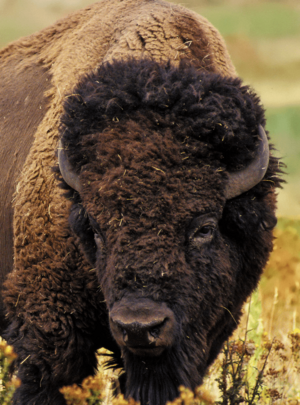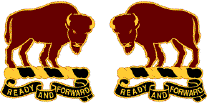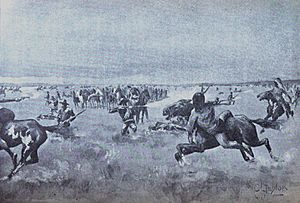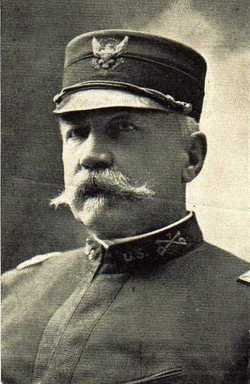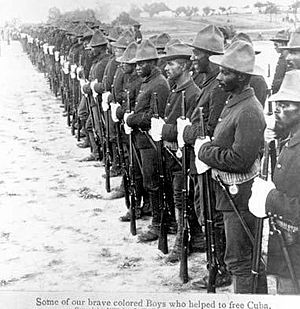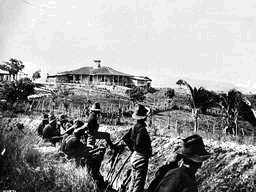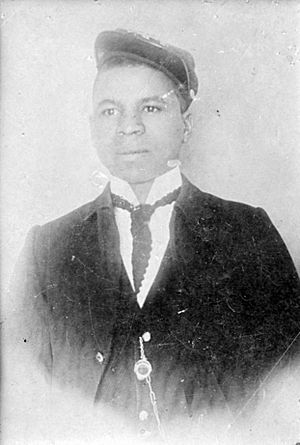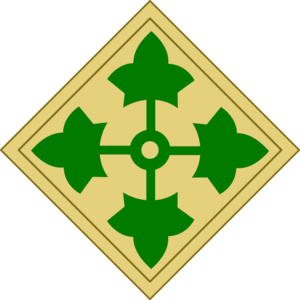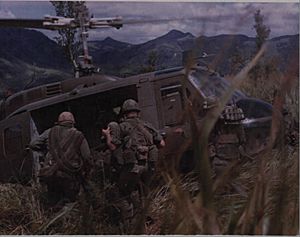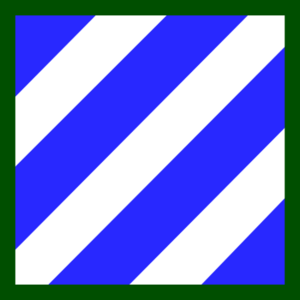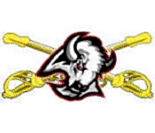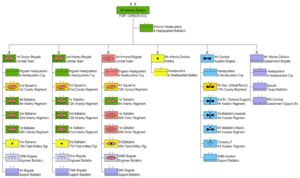10th Cavalry Regiment (United States) facts for kids
Quick facts for kids 10th Cavalry Regiment |
|
|---|---|
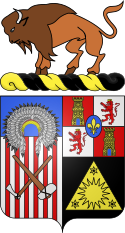
10th Cavalry coat of arms
|
|
| Active | 1866–1944, 1958– |
| Country | |
| Branch | |
| Type | Cavalry |
| Size | Regiment |
| Nickname(s) | "Buffalo Soldiers" |
| Motto(s) | Ready and Forward |
| Engagements | Indian Wars
Spanish–American War Philippine–American War Mexican Expedition World War I era combat on US-Mexican border World War II Vietnam War Iraq War Afghan War |
| Decorations |
|
| Commanders | |
| Notable commanders |
Benjamin H. Grierson George Grunert |
| Insignia | |
| Regimental distinctive insignia |  |
The 10th Cavalry Regiment is a famous unit of the United States Army. It was first formed in 1866. This unit was special because it was made up of African-American soldiers. They were one of the first "Buffalo Soldier" regiments after the American Civil War.
The 10th Cavalry fought in many important conflicts. These included the American Indian Wars, the Spanish–American War, and the Philippine–American War. Later, they served in World War II. The regiment was then reactivated in 1958. Since then, parts of the 10th Cavalry have served in the Vietnam War, the Iraq War, and the Afghan War. Today, the 4th Squadron is the only active unit of the 10th Cavalry Regiment. It is based at Fort Carson, Colorado.
Contents
Buffalo Soldier Name
The name "Buffalo Soldiers" was given to the black troopers of the U.S. Army by Plain Indians in the late 1860s. The Indians thought the soldiers' short, curly black hair looked like the fur of a buffalo. This nickname became a symbol of respect and strength.
Unit Symbols
Coat of Arms
The 10th Cavalry's coat of arms has special meanings.
- The shield shows different parts of their history.
- One side has red and white stripes. These stand for 13 major campaigns in the American West.
- It also shows a Native American war bonnet, tomahawk, and stone axe. These honor the Native American tribes and show that peace was achieved.
- Another part shows a tower and a lion. These represent the Spanish–American War and the Philippine–American War.
- A black background with a sun and three stars represents the African-American heritage of the unit. It also refers to the Katipunan, Filipino revolutionaries they fought.
- The crest is an American bison (buffalo). It faces left, showing the unit's movement across the western U.S. The black and gold colors represent the soldiers and the regiment's value.
- The motto is "Ready and Forward."
Regimental Insignia
The regimental insignia is a gold metal and enamel buffalo. It stands on a scroll with the motto "Ready and Forward."
- Symbolism: Black and gold are the regiment's colors. The buffalo is the unit's emblem. It comes from the "Buffalo Soldiers" nickname.
- History: This insignia was first approved in 1922. It was updated over the years. It was officially re-designated for the 10th Cavalry in 1959.
Regimental Song
The 10th Cavalry has a regimental song called "The Buffaloes." It was sung to the tune of "Camptown Races" around 1885. It talks about their duties and adventures.
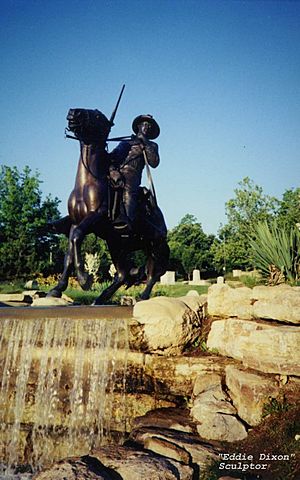
- The Buffaloes
- (The Regimental Song of the Tenth Cavalry Regiment from about 1885. Sung to the tune of Stephen Foster's "Camptown Races")
We're fighting bulls of the Buffaloes,
Git a goin' – git a goin'
From Kansas' plains we'll hunt our foes;
A trottin' down the line.
Our range spreads west to Santa Fe,
Git a goin' – git a goin'.
From Dakota down the Mexican way;
A trottin' down the line.
Goin' to drill all day
Goin' to drill all night,
We got our money on the buffaloes,
Somebody bet on the fight.
Pack up your saddle and make it light.
Git a rollin' – git a rollin'.
You are training fast for a hard fight;
A rollin' down the line.
Untie your horse and boot and gun,
Git a goin' – git a goin'.
Shake out your feet or you'll miss the fun,
A rollin' down the line.
Goin' to drill all day
Goin' to drill all night,
We got our money on the buffaloes,
Somebody bet on the fight.
It's Troops in line for the Buffaloes,
Git a movin' – git a movin'.
Then Squadron mass when the bugle blows'
A movin' into line.
Pull in your reins and sit your horse,
Git a movin' – git a movin'.
If you can't ride you'll be a corpse;
A movin' into line.
Goin' to drill all day
Goin' to drill all night,
We got our money on the buffaloes,
Somebody bet on the fight.
Early History
Indian Wars (1866–1898)
The 10th U.S. Cavalry was created in 1866 at Fort Leavenworth, Kansas. It was an all-African-American regiment with white officers. Life was tough for them at first. The fort's commander didn't want African-Americans in the army. Colonel Benjamin Grierson, the regiment's leader, got them moved to Fort Riley, Kansas.
One of their first fights was the Battle of the Saline River in August 1867. Captain George Armes and his Company F were surrounded by about 400 Cheyenne warriors. They fought for 8 hours while moving 15 miles. Only one soldier was killed. Captain Armes was wounded but praised his officers for their bravery.
The 10th Cavalry also helped in campaigns against the Cheyennes, Arapahos, and Comanches. In 1868, Troops H & I rescued Lieutenant Colonel G. A. Forsyth after his group was attacked by about 700 Native Americans. For these brave actions, Captain Louis H. Carpenter later received the Medal of Honor.
For many years, the 10th Cavalry was stationed in Kansas and Indian Territory (now Oklahoma). They guarded railroad workers, built telegraph lines, and helped build Fort Sill. They also patrolled reservations to prevent raids.
In 1875, the regiment moved to Fort Concho, Texas. Their job was to protect mail routes, control Indian movements, and guard against Mexican revolutionaries. They explored over 34,000 miles of unknown land. They also opened new roads and laid telegraph lines. These efforts helped people settle the area.
The 10th Cavalry played a key role in the 1879–80 campaign against Victorio and his Apache warriors. Colonel Grierson used his knowledge of the dry region. He controlled water holes to stop Victorio from returning to the U.S. This strategy exhausted the Apaches. Victorio was later killed by Mexican troops.

The regiment continued fighting Apaches even after Geronimo surrendered in 1886. In 1890, Sergeant William McBryar earned the Medal of Honor for his bravery during a fight at the Salt River.
Before 1898, the 10th Cavalry served in the Southwest and Great Plains. They earned a distinguished record. Many "Buffalo Soldiers" received the Medal of Honor during the Indian Wars.
Medal of Honor – Indian Wars
The Medal of Honor is the highest military award in the U.S. Three members of the 10th Cavalry Regiment earned it during the Indian Wars:
- Sergeant William McBryar, for actions at Salt River in 1890.
- Captain Louis H. Carpenter, for actions during Indian campaigns in Kansas and Colorado in 1868.
- First Lieutenant Powhatan Henry Clarke, for actions during the pursuit of Geronimo in 1886.
Spanish–American War (1898)
The 10th Cavalry fought in the Spanish–American War in 1898. They served alongside other African-American regiments. They were part of the Cavalry Division, which also included Theodore Roosevelt's "Rough Riders".
They fought in key battles in Cuba, including the Battle of Las Guasimas, the Battle of Tayacoba, and the Battle of San Juan Hill.
At the Battle of Las Guasimas, the 10th Cavalry helped save some of the Rough Riders who were ambushed. This brave act was even painted by war artist Frederic Remington.
Battle of San Juan Hill
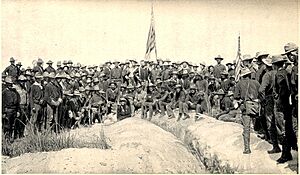
The 10th Cavalry Regiment played a huge part in taking the two main heights: Kettle Hill and San Juan Hill.
As the 10th moved into position, they were under heavy fire. No orders to advance came, and soldiers were getting hit. First Lieutenant Jules Garesche Ord of the 10th Cavalry asked his general for permission to charge. The general didn't forbid it. So, Ord led the charge up the hill. Other units followed the "Buffalo Soldiers" forward.
Ord was one of the first to reach the top of San Juan Hill. He was shot and badly wounded there. First Sergeant Givens took command of D Troop. Lieutenant John J. Pershing also helped lead the charge up Kettle Hill. He later took temporary command of D Troop. The 10th continued fighting until Santiago fell to the Americans in July 1898.
Kettle Hill was a smaller part of the San Juan Heights. Elements of the 10th Cavalry took Kettle Hill with help from Roosevelt's Rough Riders and the 3rd Cavalry. Most of the 10th, supported by other units, took San Juan Hill. Sergeant George Berry of the 10th Cavalry was among the first to plant his unit's flag on Kettle Hill.
Medal of Honor – Spanish–American War
Five members of the 10th Cavalry Regiment earned the Medal of Honor during the Spanish–American War:
- Sergeant Major Edward L. Baker Jr., at Santiago.
- Corporal Dennis Bell, for a rescue mission at the Battle of Tayacoba.
- Private Fitz Lee, for the rescue mission at the Battle of Tayacoba.
- Private William H. Thompkins, for the rescue mission at the Battle of Tayacoba.
- Private George H. Wanton, for the rescue mission at the Battle of Tayacoba.
20th Century
Philippine–American War (1899–1902)
After the Spanish–American War, the 10th Cavalry went to the Philippines. This conflict was called the "Philippine Insurrection." The regiment served honorably there until 1902. Some senior non-commissioned officers became officers in the Philippine Scouts. However, this opportunity was short-lived. The first American Governor General, William Howard Taft, stopped the segregated "colored" regiments from serving in the Philippines.
Duty in the West and East
The 10th Cavalry returned from the Philippines in 1902. They were stationed in the southwestern United States. Their duties included patrols and garrison life.
In 1909, the regiment moved East for the first time. They were stationed at Fort Ethan Allen in Vermont. Soldiers described this time as "luxurious." They had warm barracks, heated horse barns, and good food. Many soldiers also got better education.
Baseball was a favorite pastime. The soldiers played against local teams. They also learned and played basketball indoors during the cold Vermont winters. The "Basketball Troopers" became very good.
In 1911, the regiment formalized its coat of arms. They also showed off their horsemanship to important people, including President Wilson. "F Troop" of the 10th Cavalry became the best demonstration unit in the U.S. Army.
In late 1913, rising tensions on the Mexican–American border led the 10th to move to Fort Huachuca, Arizona.
Mexican Expedition (1916–1917)
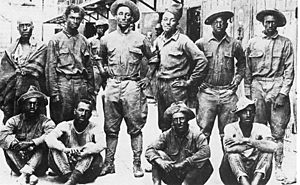
The 10th Cavalry took part in the Punitive Expedition into Mexico. This was to catch Pancho Villa, a Mexican revolutionary. Villa had attacked a village in New Mexico.
More than 5,000 U.S. troops, led by General John J. Pershing, went into Mexico. The 10th Cavalry was part of this force. On June 21, 1916, two troops of the 10th fought Mexican Federal Army troops in the Battle of Carrizal. Twelve U.S. soldiers were killed, and 23 were captured. This fight almost started a full war with Mexico. But both governments worked to calm things down. The captured soldiers were later returned.
World War I (1918)
The 10th Cavalry stayed in the United States during World War I. In January 1918, they fought Yaqui Indians near Nogales, Arizona.
In August 1918, the 10th Cavalry fought in a border skirmish called the Battle of Ambos Nogales. This was unique because German military advisors fought alongside Mexican soldiers against U.S. troops. It was the only time German soldiers fought U.S. soldiers on land in North America during World War I.
The battle started when a Mexican civilian tried to cross the border without being checked. Fighting quickly grew. The 10th Cavalry, led by Lt. Colonel Frederick Herman, attacked Mexican and German positions on hills overlooking the town. U.S. soldiers advanced under heavy fire. The Mexicans surrendered after about three hours.
World War II (1942–1944)
At the start of World War II, the 10th Cavalry was at Fort Leavenworth, Kansas. In 1942, they moved to Camp Lockett, California. They helped defend the western U.S. Some of their non-commissioned officers formed the core of the new 28th Cavalry Regiment.
In 1943, the 10th and 28th Cavalry Regiments helped fight wildfires in the Cleveland National Forest. In 1944, the 2nd Cavalry Division, which included the 10th, was sent to North Africa. It was deactivated there. Many of its soldiers became support units. Some fought as replacements in the 92nd Infantry Division.
Early Cold War (1958–1980s)
In 1958, the 10th Regiment was reactivated. They continued to wear the buffalo symbol. The 1st Squadron, 10th Cavalry, was assigned to the 4th Infantry Division in 1963. The 2nd Squadron, 10th Cavalry, was activated in 1957. It served in Korea and later in California.
Vietnam War (1966–1972)
In 1966, the 1st Squadron, 10th Cavalry, went to South Vietnam during the Vietnam War. They operated as part of the 4th Infantry Division. They earned a Valorous Unit Award in 1969 for fighting a large enemy force. The 1st Squadron earned 12 campaign streamers and other awards in Vietnam.
In 1972, Troop H/10th Air Cavalry was formed. They used helicopters for scouting and combat missions. Specialist 4 Robert Frakes, a member of this troop, was the last American combat casualty of the Vietnam War. He died in a helicopter crash in January 1973.
Late Cold War (1977–1990s)
The 1st Squadron, 10th Cavalry, participated in many "Exercise Reforger" drills. These exercises tested the ability to quickly send U.S. forces to West Germany during the Cold War. The 2nd Squadron, 10th Cavalry, also took part in these exercises. In 1989-1990, they deployed to Panama for "Operation Just Cause."
D Troop, "Black Jack"
D Troop of the 10th Cavalry Regiment had a unique path. It was reactivated in 2000 and assigned to the 3rd Brigade, 3rd Infantry Division. In March 2003, D Troop went to Iraq as part of "Operation Iraqi Freedom." After returning in 2003, D Troop was deactivated.
21st Century
C Troop, 10th Cavalry, was reactivated in 2001. It served as a reconnaissance troop and quick reaction force in Baghdad, Iraq. They were known for clearing routes in light vehicles. C Troop was later deactivated and re-flagged as part of the 1st Squadron, 7th Cavalry.
The 1st Squadron, 10th Cavalry, served in Operation Iraqi Freedom from 2003–2004 and again from 2005–2006. They earned their second Presidential Unit Citation. D Troop of the 1st Squadron, 10th Cavalry, played a key role in Operation Red Dawn. This was the mission that captured Saddam Hussein in December 2003. A and C Troops also helped secure the area for this operation.
Present Day
Today, the 10th Cavalry Regiment has only one active squadron: the 4th Squadron, 10th U.S. Cavalry. It is an armored Cavalry squadron. It uses M3 Bradley and M1 Abrams vehicles. It is part of the 4th Infantry Division at Fort Carson, Colorado.
The 4th Squadron deployed to Iraq from 2007–2009 and again in 2010. In 2015, they deployed to Jordan. In 2017, they went to Europe for "Operation Atlantic Resolve." In 2019, they deployed to the Middle East.
As of June 2019, the 4th Squadron, 10th U.S. Cavalry Regiment, is the only active unit. It has three Cavalry Troops (Apache, Blackfoot, Comanche), one Tank Troop (Dakota), a Forward Support Troop (Dragoon), and a Headquarters Troop (Hunter).
In July 2022, COWBOY Troop 10th Cav was reactivated at Fort Hood, Texas. It is an Armored Cavalry Troop. It will test new army structures for future missions.
Campaigns and Awards
The 10th Cavalry Regiment has a long history of service.
Campaigns
- Indian Wars: Many battles in Kansas, Texas, and Arizona from 1867 to 1918.
- Spanish–American War: Key battles in Cuba in 1898, including Las Guasimas and San Juan Hill.
- Philippine–American War: Fought in the Philippines until 1902.
- Mexican Revolution: Fought in the Battle of Carrizal in 1916.
- World War I: Fought in the Battle of Ambos Nogales in 1918.
- World War II: Served in defense duties and some members fought in Italy.
- Vietnam War: Participated in many counteroffensives from 1966–1972.
- Iraq War: Involved in the liberation and reconstruction of Iraq from 2003 onwards.
- War in Afghanistan: Deployed to Afghanistan in 2010–2011.
Regimental Decorations
The 10th Cavalry has received many awards for its bravery:
- Presidential Unit Citation (Army) (2 awards)
- Valorous Unit Award (many awards for different squadrons)
- Republic of Vietnam Cross of Gallantry with Palm (2 awards)
- Republic of Vietnam Civil Action Honor Medal, First Class
- Army Superior Unit Award
- Meritorious Unit Commendation (Army)
Notable Members
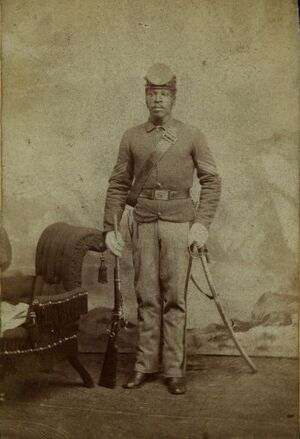
Many brave soldiers have served in the 10th Cavalry.
- Mark Matthews: The oldest living Buffalo Soldier, he died at 111 in 2005. He joined the 10th Cavalry at just 15 years old.
- Medal of Honor Recipients:
- Indian Wars: William McBryar, Louis H. Carpenter, Powhatan Henry Clarke.
- Spanish–American War: Edward L. Baker Jr., Dennis Bell, Fitz Lee, William H. Thompkins, and George H. Wanton. These four received it for a daring rescue at the Battle of Tayacoba.
- Benjamin Grierson: The first commander of the 10th Cavalry Regiment.
- Henry O. Flipper: The first African-American to graduate from West Point in 1877.
- Jules Garesche Ord: A First Lieutenant who bravely led the charge up San Juan Hill and was killed in action.
- John J. Pershing: Later a famous General, he commanded a troop of the 10th Cavalry in Montana. He also fought with them in Cuba. He was known as "Black Jack" because he admired the professionalism of the "Buffalo Soldiers."
- Charles Young: A Major (later Colonel) who commanded a squadron during the 1916 expedition into Mexico. He led a charge that saved other soldiers.
Images for kids
See also
 In Spanish: 10.º Regimiento de Caballería (Estados Unidos) para niños
In Spanish: 10.º Regimiento de Caballería (Estados Unidos) para niños
- List of Medal of Honor recipients
- List of Medal of Honor recipients for the Indian Wars
- Military history of African Americans


